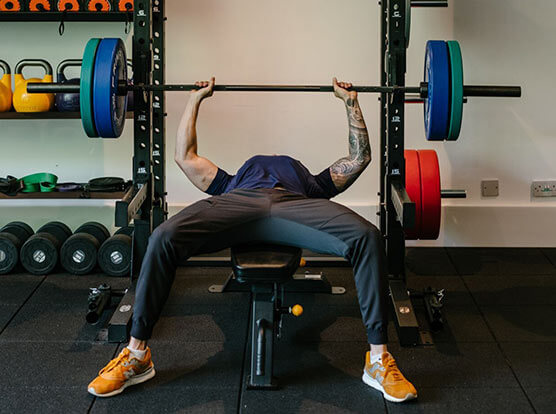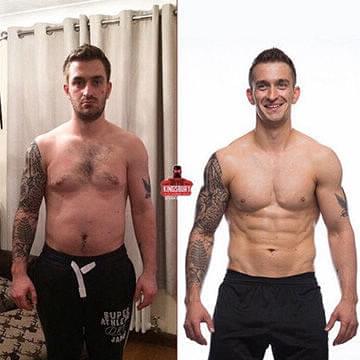If you are reading this, the answer is probably not.
You might think it is your nutrition holding you back, and you are probably right about this, but your training is probably not helping….
Having an understanding of what you want to achieve, what you need to do to achieve it and how to apply it is essential if you want to see a positive change. You can rely on trial and error, you might crack it, but you might just run through the motions and achieve little.
Before I get into the post I just want to say that I don’t expect you to know what to do. The subject of optimum training and nutrition for results is a complex one.
When I need to do a tax return my accountant does it for me. Why? Because I am horrible at accounts. I could research it online, get him to show me how to it or just not pay tax and go to jail.
But I don’t. I get him to do it for me because it saves me a lot of time and money and keeps me out of jail, for now.
I am not saying this to sell you my coaching, I am just letting you know that if you want to maximise your results you need to do some serious research or get some help from an expert.
Whilst I will not be able to cover all the details here, I will do my best to point you in the right direction.
Are you training for your goals?
This might sound obvious but it amazes me how many peoples training is not geared towards their goals at all. If you are looking to build muscle or maintain muscle then you need to training that encourages muscle growth/maintenance. If you are looking to get fitter then you need training encourages your body to become more efficient aerobically.
If you don’t know how to train then get some advice as it could totally transform your results and
Are you training your body evenly?
When it comes to choosing which muscles to train and often to train them people make some pretty poor decisions. Mirror muscles tend to get a bashing whilst those that support good posture get overlooked and underworked. When you plan your training focus on working your body evenly for reduced risk of injury, better posture and strength. A good way of doing this is matching your sets for horizontal press/pull, vertical press/pull and posterior/anterior chain for lower body and core.
If you don’t know what movements work which muscle this would be a great thing to learn. There are obviously thousands of exercises to choose from but keeping it to a few simple movements to start makes a lot of sense.
A few examples
Push ups – Bodyweight rows
Shoulder press – lat pull down
Chest fly – rear delt fly
Biceps – Triceps
Squats – Romanian deadlifts
Knee raises – back extensions
Is your training structure sound?
The frequency that your train muscles, the sequence in which you perform them and the breakdown of each session and each week of training all impact your results.
For muscle training frequency working each muscle group twice per week is a sensible approach. It allows you to train with a good total volume for each muscle group and provide good stimulus for adaptation.
When selecting the sequence of movements you are typically better off doing heavier and or more technical movements earlier in your sessions. Then doing lighter more isolated movements later in the session. An example of this would be going barbell bench press before a tricep pushdown. There are certain instances where doing isolation work can be beneficial prior to compound movements to pre exhaust muscles, but generally it is better to be fresh and strong for the movements you can handle more load with.
Are you training safely?
The order of movements, the frequency, volume and your form all have an impact on the safety of your training.
One of the first things to consider is whether or not you are performing exercises with good form. Certain, if not most movements done badly can quickly result in injury. Overworking muscles can result in injury and training when fatigued can result in injury.
Get some advice on your form and training schedule to help avoid problems. The worst thing for progress is not being able to train and I have worked with a lot of people suffering from severe injuries brought on by training without proper care.
Are you using suitable rep ranges, sets, rest, tempo, ROM, load, overload and frequency?
I get asked all the time what the best movements for muscle building are. The truth is the movements are less important than the other factors that progress. Of all the topics today this is likely the most complex as there are so many moving parts, but these factors contribute more to your progress than deciding whether to use dumbbells or a barbell for loading.
“Rep” stands for “repetition” and defines one complete motion of an exercise.
And one “set” is a consecutive number of reps without stopping.
Rest is how long you take between sets to allow for recovery.
Tempo is the speed in which you do your reps
ROM is your range of movement for the lift
Load is the weight that you choose
Frequency is how often you train a muscle
Overload is the gradual increase in stress placed on muscle by altering one or more of the above reps, sets, rest, tempo, ROM, load and frequency (but not all at once haha)
What rep ranges do I need for my goals?
Strength
1-5 reps is typical used for maximal strength gains. If you are a novice lifter I would not suggest training in this rep range until your form is on point.
Strength/hypertrophy
6-8 reps: It is a good rep range for most people as it brings a nice balance between strength and muscular gains.
Hypertrophy/muscular endurance
9-12 reps: this is the rep range that the majority of people use. But most people don’t train with correct intensity in this range. They end lifting a weight for 12 reps when they could have done 20. As with any of the rep ranges for it to be effective the load needs to correct for the reps, if it is 12 reps you should be lifting a weight you can lift for 12 reps, not 15, 20 or 100.
Muscular endurance/hypertrophy
13+ reps: Whilst 12 reps if often considered the cut off for hypertrophy there are muscle building benefits in this ranges as well as muscular endurance benefits. This is also an excellent rep range for beginners in order to develop proper form and control of the movements.
Sets
The rules of sets are not set in stone but typically more reps = fewer sets. Your muscles need a certain amount of volume in order to see results.
Lifting a weight for just one set is not going to do you much good. We also want to make sure we do not train a muscle too much. 15 reps of squats done with 15 sets is just not a good idea!
1-5 reps: 4-6 sets
6-8 reps: 3-5 sets
9-12 reps: 3-4 sets
13+ reps: 2-3 sets
As I have said this isn’t set in stone but these are pretty good guidelines
Rest
1-5 rep range. Resting 3-5 minutes after each set is ideal in order to allow for almost a full recovery.
6-8 rep range and will usually call for a 2-3 minute rest interval.
9-12 rep ranges 60 seconds – 2 minutes is where you’ll want to be.
13+ reps and your rest can be anywhere from 10 seconds to 120 seconds.
You will find that working out the larger muscles are much more taxing than the smaller ones so you will require more rest.
For more information of frequency you can check out one of my other blogs here – http://davidkingsbury.co.uk/blog/whatsthebesttrainingsplittobuildmoremuscle/
I hope you have found the post useful and I also hope it has left you with questions as well as answers. There are always ways we can improve our training, often drastically and having questions is a great place for continued learning.










